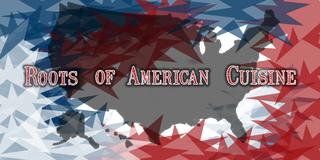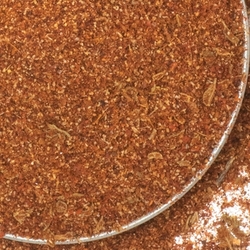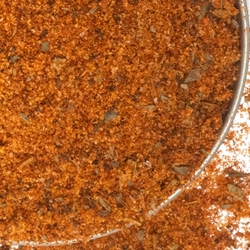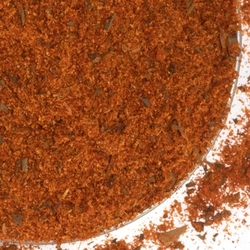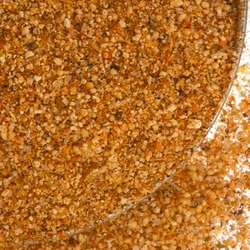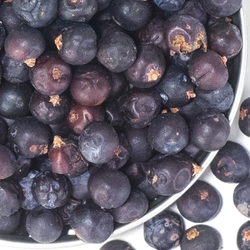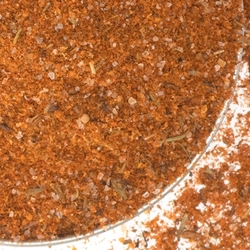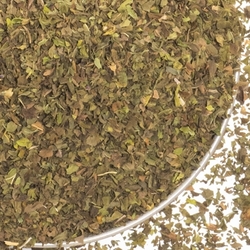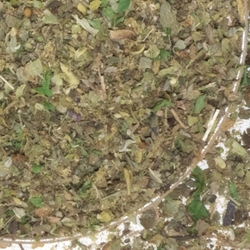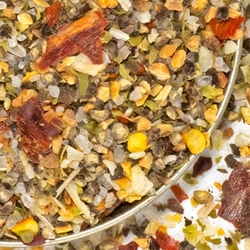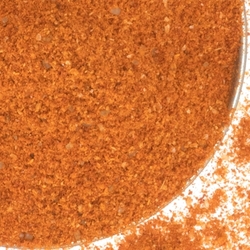Roots of American Cuisine
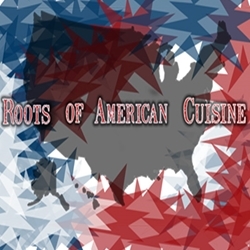
What exactly is American Cuisine? First things first, we should mention that the term "American" here is meant to encompass the cuisine of the United States and not the entire cuisine of both North and South America. Trying to talk about the cuisines of both continents like that wouldn't fit very neatly into a single blog post!
American cuisine is a vast collection of history and cultural influence, much like the American people are. America is often called the melting pot of the world, where people from all different walks of life and all different countries unite to form one unified American People. The cuisine here reflects that, as we have thousands upon thousands of restaurants that vary; you can choose from a classic Italian corner store to a Jewish deli, to a Greek diner, an Indian hole in the wall, and a Native American food truck, potentially all in the same neighborhood. You may also be lucky enough to find a Mexican taco standoff Interstate 80 in Pennsylvania, home to not only this taco stand but the regional favorite shoo-fly pie as well. Of course, there are dozens of other cuisine options here in the US, making for a very unique food topography.
American Herbs, Spices, and Seasonings
Since American cuisine is overflowing with herbs, spices, and seasonings from hundreds of different global cuisines, it is easy to place all the spices and herbs onto a list and call it done. However, there are some that truly are indigenous to the United States. This list may be small, but it represents some mighty flavors.
- Juniper - best known for flavoring gin. Of all the gin joints in all the world and juniper is from the US!
- Chiltepin Chiles - the only chiles indigenous to the United States, these are believed to be the oldest chiles in the world.
- Sumac - tart Sumac can be found--in its edible form--in all 48 contiguous United States. Native Americans used Sumac to season food for centuries, and would let whole berries steep in water for a brisk, "sumac-ade" beverage. Sumac has a poisonous cousin, but there's a simple way to tell if a sumac berry is safe. If it's red, it's perfectly edible. If it's white, it's poison.
- Certain types of mint are also native to the United States, but neither the popular spearmint nor peppermint are included on that list.
Where we lack in indigenous herbs, spices, and seasonings, we are certainly capable of creating blends that encompass the spirit of the various regional cuisines across this country.
- Gulf Coast Bay Seasoning - various versions of this spice have cropped up around the United States, though they are most popular in harbor towns.
- Nashville Hot Chicken - a dish that was created by a woman scorned that didn't quite have the effect she was aiming for. Instead of causing distress, this spice blend helped catapult her cheating lover into the limelight as the main proprietor of hot chicken! This is a classically American dish that has gained a lot of popularity over the last few years as spicy foods are beginning to become more common on the American palate.
- Austin Steak Rub - a blend inspired by the grandeur of great American Austin Steakhouses, known for their perfectly flavorful cuts of beef.
- Buffalo Wing Rub - made to use on our favorite part of the chicken- the wing! Average Americans will consume just over 17,500 wings in their adult lifetime.
- Hill Country Chili Powder - inspired by the Tex Mex roots of the hilly area around Austin, Texas.
- Jambalaya Seasoning - jambalaya is a dish borne from necessity and made of ingredients that were common to Louisiana, where it was invented. Coming from Spanish and French influence, this dish is usually made up of inexpensive meat, vegetables, and rice.
- Cajun Seasoning - food historians tend to agree that Cajun is one of only a handful of genuine American cuisines. This seasoning blend is intended to be used on the traditionally one pot Cajun dishes.
- Creole Seasoning - Creole food is another of the genuine American cuisines food historians can agree on. Creole food absolutely has a New Orleans lilt to it, and a pepperiness that is unmistakable, just like this blend!
- Louisiana Fish Seasoning - this seasoning was made to embrace the love of seafood you are sure to find in Louisiana.
- Napa Valley Pepper - this blend comes to us with inspiration drawn from the vibrant, light, healthy cuisine that is so popular in California. It has a lovely citrus zing and some tastiness that brings to mind that hot California sun.
- New York Pizza Sauce Seasoning - if ever there was an American food classic, New York City pizza is the one. There's a strong debate over who does it better, New York or Chicago, but it's impossible to leave either city without trying a slice.
Wait, you are shouting at us, you forgot salt and pepper! Pepper isn't indigenous to the US, and salt is technically everywhere, but you will often find the two of them most closely intertwined on kitchen tables across the United States. This duo was made to be paired up. You will almost always see "salt and pepper to taste" on savory American recipes, and for that reason alone we are including it in this American Seasonings list.
British Colonization in Global Cuisine
We can't talk about how American food is a fusion without mentioning that because of British colonization a lot of foreign foods have already been adapted to a western palate to begin with, meaning that a lot of the foods we consider to be foreign foods may actually already be a fusion food. Historically the British colonized several parts of the world and imposed their own crops and thus cuisine onto that region's crops and cuisine, leaving us with an interesting mishmash of what is truly regional and what is regional with the taste of British influence as well. The most striking example of this is chicken tikka masala, a dish that Americans tend to consider Indian, even though it is a British interpretation of Indian food. Chicken tikka masala has now become incorporated into real Indian cuisine, but it was an Indian-inspired British food from the get-go. British colonization has affected how we perceive foreign food as Americans, and how the world as a whole eats, even today.
Native American Cuisine
There are over 500 different Native American tribes alive in today's United States. During the establishment of the United States, many natives were unfairly displaced or removed from their homes by force. Before the lands were divided up into bordered countries and nations, the nations of Native Americans had their own land designations and so we can't exclusively talk about native communities in what would be the US today. Another thing that makes it very hard to talk about Native cuisine is the fact that it is so diverse that we can't lump all 500+ tribes' diets and wonderfully unique dishes under the umbrella of "Native American Cuisine." However, we can talk about some general crops and how they have affected the American diet today, even if we can't necessarily say "this one food represents Native Cuisine" like we tend to say "pasta represents Italian cuisine."
Some of the most important ingredients in Native American cooking are corn, beans, and squash, also known as the three sisters! These crops grow in a way that is beneficial to them all. The beans grow up the corn stalk, so the corn acts as a pole for the beans to grow around. The beans give the soil nitrogen, making for better soil quality. The squash grows on the ground around the beans and corn, providing protection to the root system and discouraging weed growth. These ingredients and this style of agriculture create a harmonious system for gardeners and mass food producers alike. These are still staple foods in the United States, as they are easy to grow and work well together flavor wise.
Then of course there is the controversy of fry bread. Frybread gained popularity in Native American cultures when they were forced to rely on rations from the US government to survive during the mid-19th century as they were moved to other parts of the country that wouldn't support their regular crops. The rations mostly consisted of flour, salt, lard, and water, all of which were used to create these breads. Frybread today can still be found in Native homes, though it is with the memory of colonialization and unfair treatment that it is consumed.
Native American food is seeing more recognition today, as a return to simple ingredients, and local food first is drawing more attention to the traditional foods of the country. There is also a draw toward focusing more on seasonally available fruits and vegetables instead of eating the same things year-round because of global farming and trade. This seasonal diet is helping bring more attention to local agriculture and inadvertently helping to bring Native American dishes back to the forefront. After all, natives were the first chefs who mastered the art of making the food of these lands.
"As American as Apple Pie"
Apple pie is touted as the most American thing in the world, but none of the ingredients are indigenous to the US. Apples aren't indigenous to the United States, they come from Asia. The idea of pie comes from the English tradition of pie making, in which pie crusts were hardly edible and were not eaten, instead acting as a historical type of Tupperware to preserve the food inside. Instead, apple pie is American because it encompasses the very idea of the American spirit. Taking ingredients from all over the globe and producing one perfect pie is very much on brand for the melting pot country of the world.
Jell-O is another treat we think of as being very American when it was not invented in the US at all. Our first interaction with Jell-O was likely the import of powdered gelatin from a Scottish company called the "J and G Company" from Edinburgh. To create brand loyalty and welcome immigrants to the United States who came in through Ellis Island, the Jell-O brand would hand out free bowls of Jell-O to newcomers as they entered the country during the early 20th century, helping to create this idea of Jell-O being American.
Classic American Foods
Here are some food things Americans did invent, foods that have become quintessential icons of the American Cuisine the world has come to love.
- Scrapple - A food that comes from the Mid-Atlantic states, this is a hunk of cornmeal, wheat flour, and pork scraps. Some people say it's "everything but the oink" and it is usually sold in a loaf which can be sliced, fried, and then served on bread or at breakfast in place of the typical sausage or bacon.
- Buffalo Wings - Invented in Buffalo New York, buffalo wings have quickly become an international star.
- Cheeseburgers - It seems like it might be too good to be true, but it's fact! The cheeseburger was invented in the United States and has since seen a boom in popularity all over the globe.
- S'mores - A delicious snack made from graham crackers, chocolate, and marshmallow that is cooked over an open campfire and eaten quickly, with the guarantee of tacky hands and fingers sticking together after it's been consumed.
- Chocolate Chip Cookies - The original American chocolate chip cookie recipe is still listed on the backs of every individual bag of Nestle Toll House chocolate chips.
- Corn Dogs - No one is really sure exactly the origin of corn dogs, but they were likely invented at a state fair. Interestingly enough, corn dogs are quite popular in Japan too! There, they are made with a batter of pancake mix, which is much sweeter than the cornmeal we use, and the meat of choice is more frequently a fish meat rather than beef or pork. In Japan, the name for corn dogs is "American Dogs."
- Brownie - Said to have been invented in Chicago, this was once a dessert exclusive to the socialites of the United States.
- Tater Tots - These were invented by the Ore-Ida company when they were searching for something to do with their potato scraps that resulted from making their other products.
Regional Food Is Better
So the theory goes, anyway. According to Alton Brown, having a regional specialty often leads the cooks within this region to get lazy and assume that they've got it down. Eventually, they end up mass producing what other people have come to expect from the food instead of creating something that is truly regional or unique in any way. This may mean that someone orders from a menu in an area expecting a regional delicacy and receives something that may in fact be subpar, but because they are in that area, they think it's the best of the best! This is an interesting conundrum since replications of poor examples of the original "best" food can permeate the culture. The opposite can happen too, where the masses get a watered-down version of a regional classic and then anticipate something less unique when they go to that region to try the food in its birthplace. KFC's take on Nashville Hot Chicken is one example of this. The national chain introduced this regional favorite to the masses, and the masses then began to understand Nashville Hot Chicken as it was presented by KFC. Then, some tourists were greatly surprised when visiting Nashville only to find that Nashville Hot Chicken is much hotter than KFC led them to believe!
The Future of American Cuisine
As time passes and technology makes the world increasingly smaller, we will continue to see a shifting food landscape where more and more cuisines become part of fusion cuisines, uniting the people of the world through the flavors. From regional preferences to the influence of larger groups of immigrants, we see our American Cuisine shifting constantly to incorporate new flavors and combinations that previously may have been uncommon in the US. The future of American Cuisine is sure to be flavorful, to say the least!
Read More
A Spicy Guide to New Mexican Cuisine
Defining American Cuisine

